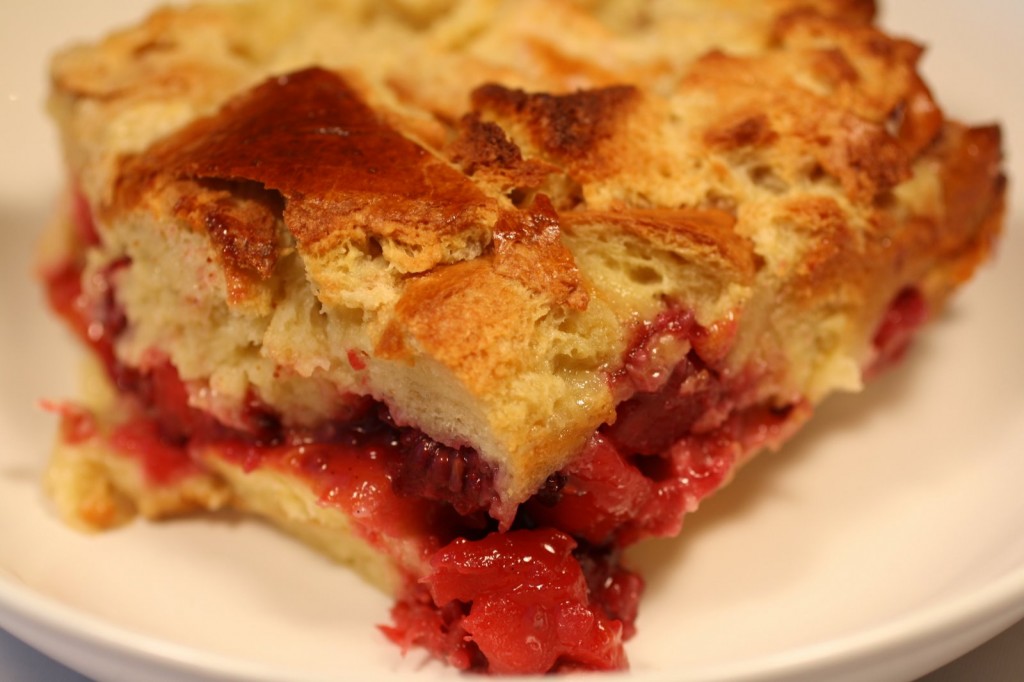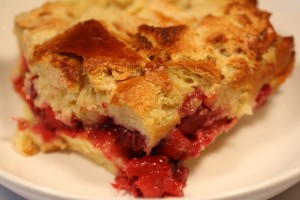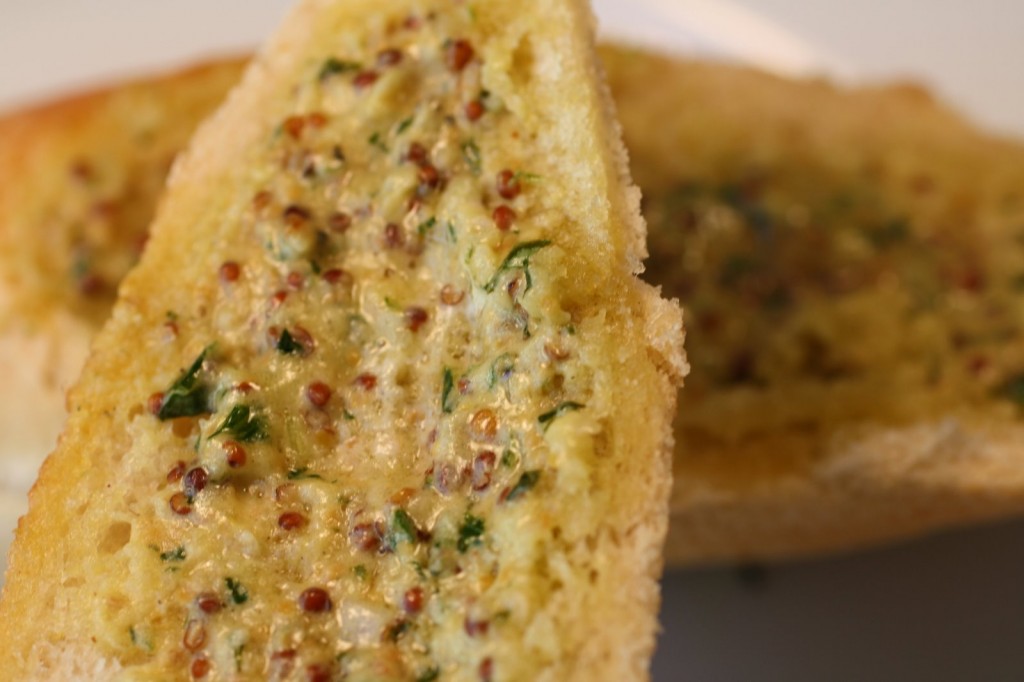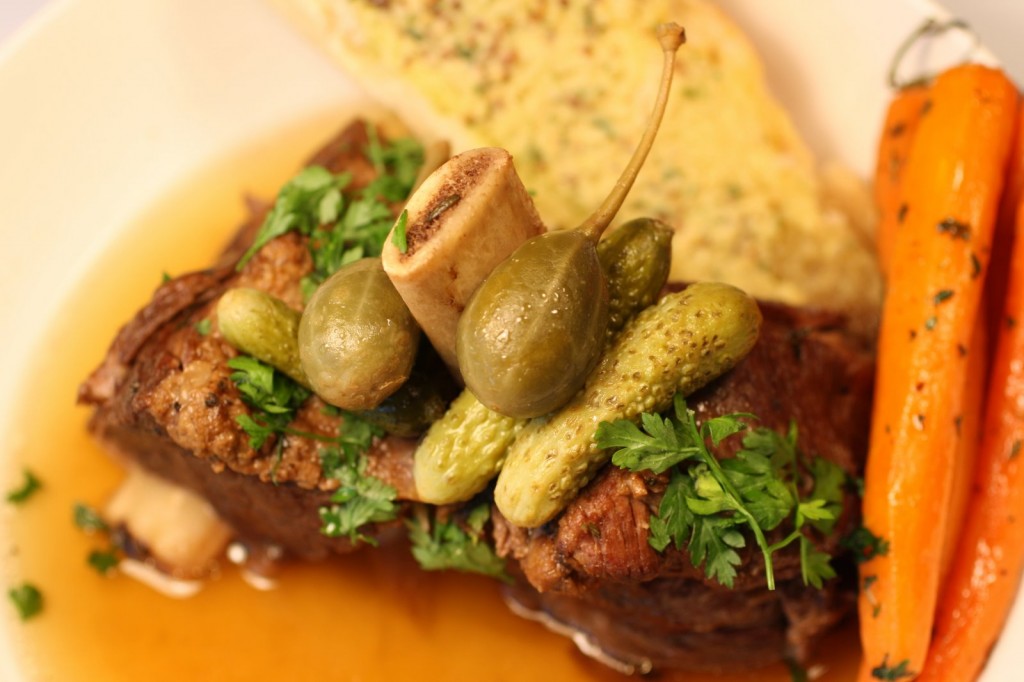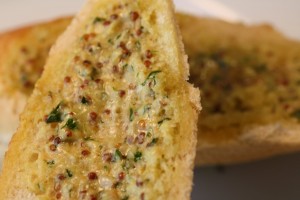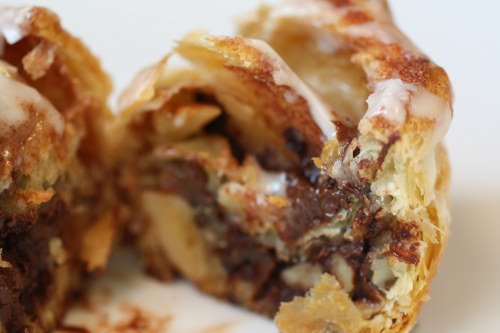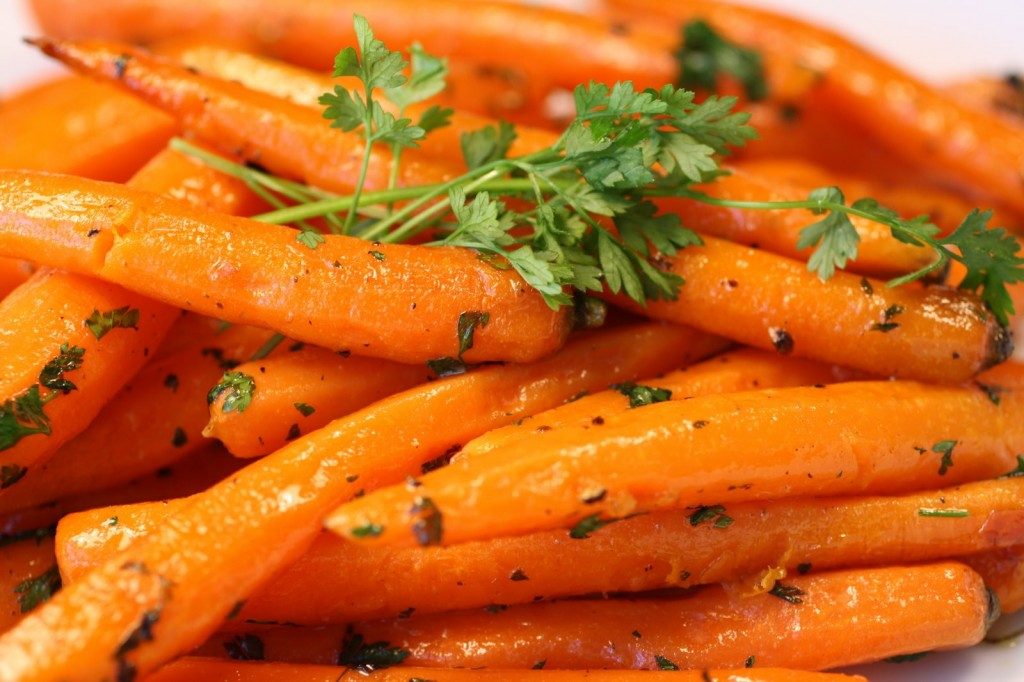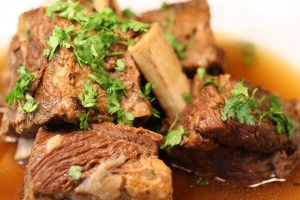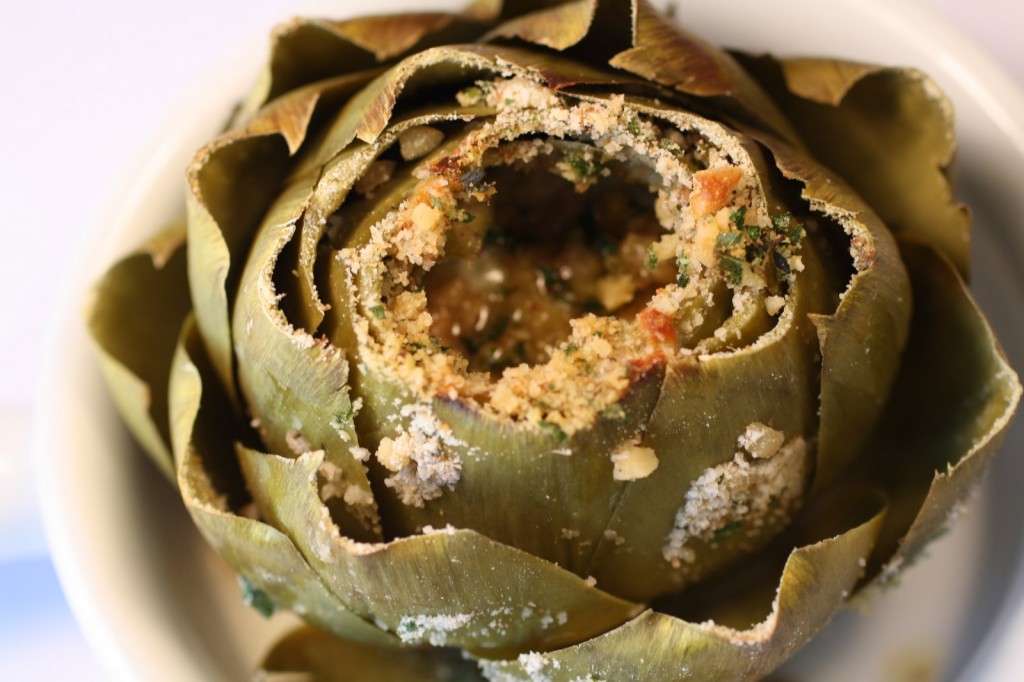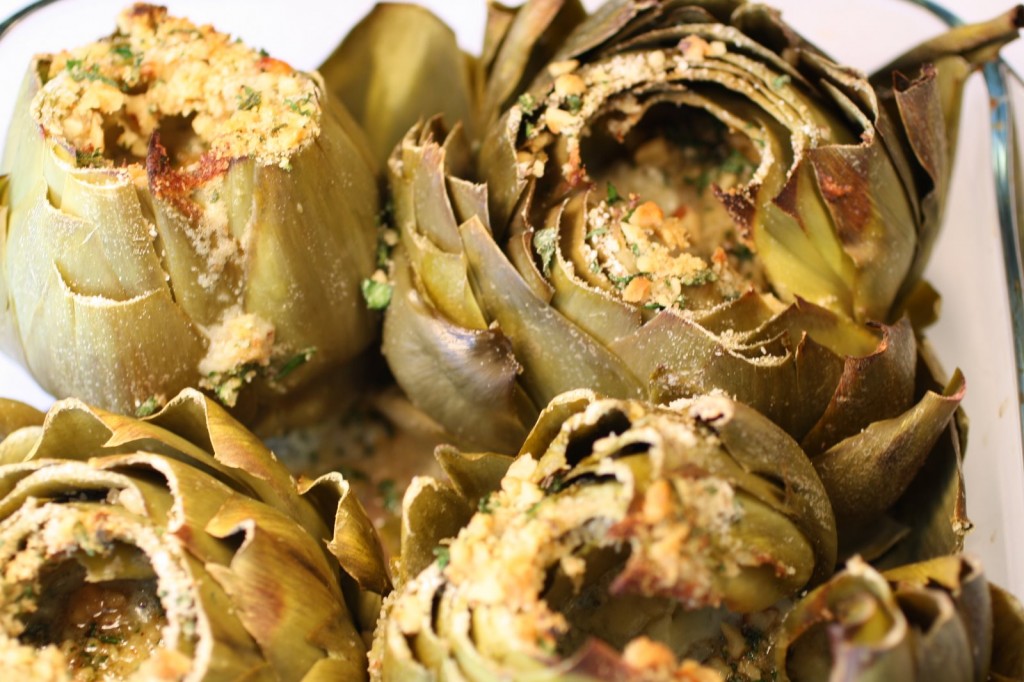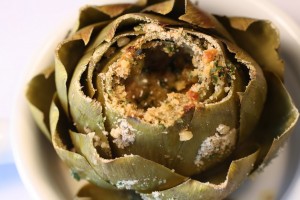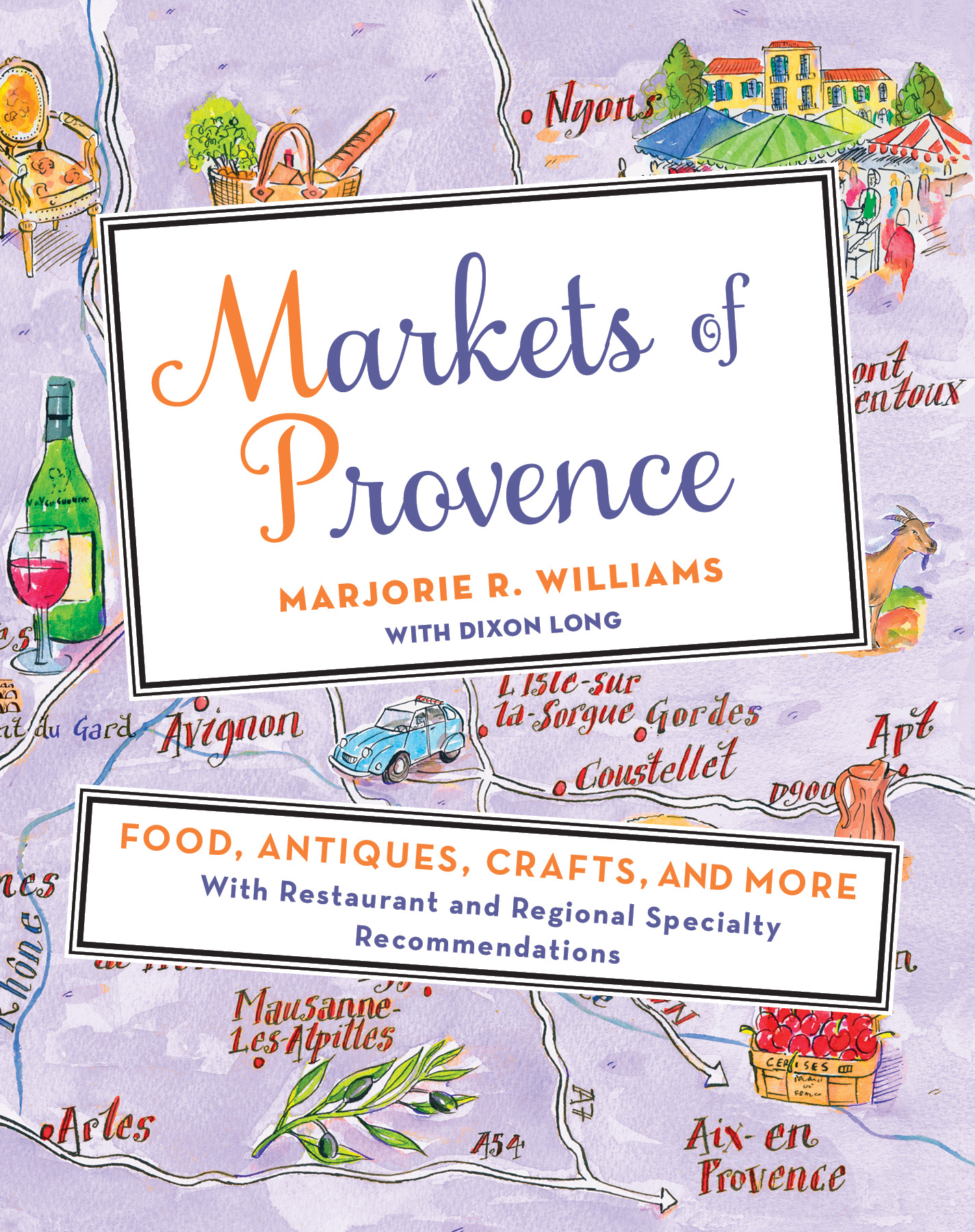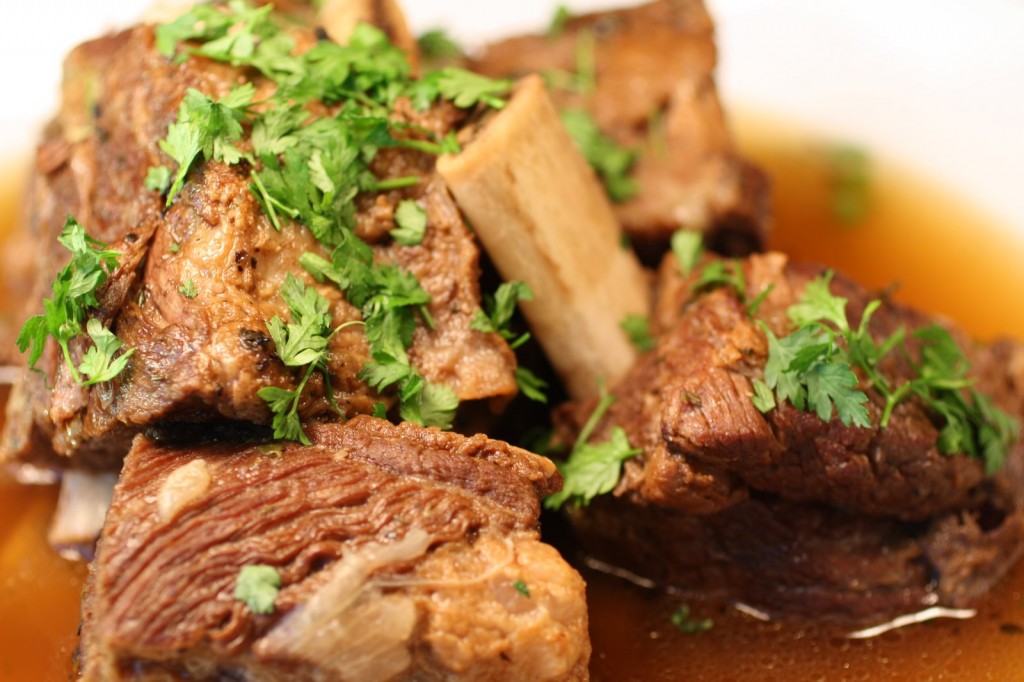
Short Rib Pot au Feu
In my four-course modern French meal for BBC Radio Oxford, this streamlined stew from French antiquity plays the star role. In my next post, get the recipes for the Chervil Chantenay Carrots and Two-Mustard Garlic Baguette that I serve alongside…
Pot au Feu is a traditional French beef stew that translates literally to Pot on the Fire. A peasanty culinary relic, Pot au Feu usually combines several cuts of meat and marrowbones into a broth with vegetables, and can constitute a three course meal all on its own. The broth is served as a soup, the meat with mustard, the marrow with bread. But my greatest thrill in the kitchen comes from taking great traditions like Pot au Feu, and modernizing them, streamlining them to our way of life, and altering them to our contemporary tastes. To me, recreating a traditional dish is like renovating the old family home—the comfort and memories remain, but the style is more you, more elegant, more fun.
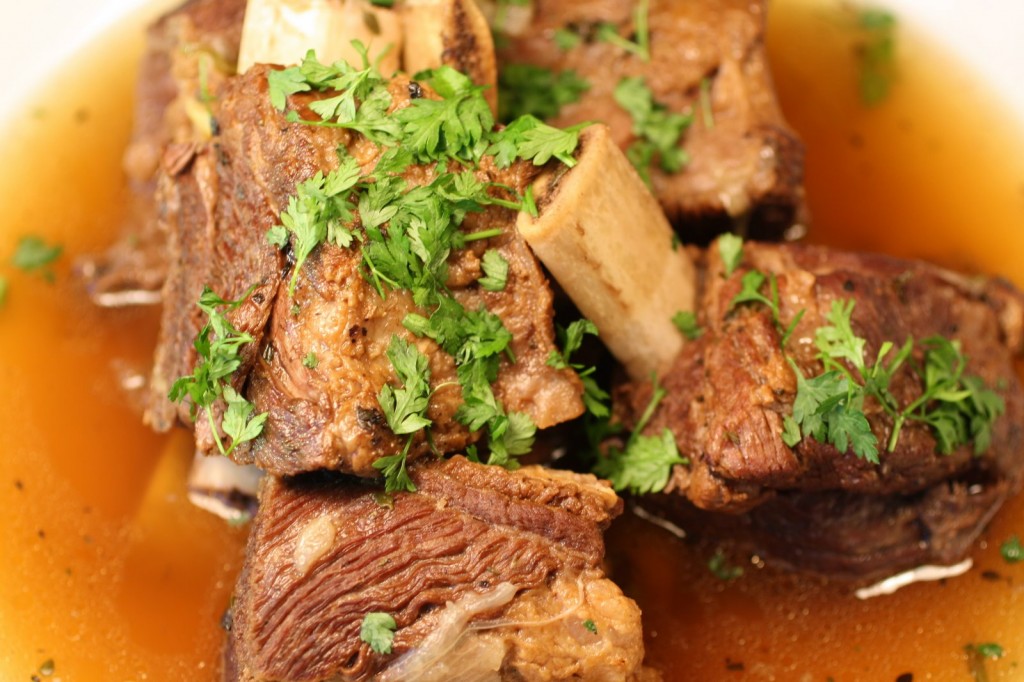 So, to renovate Pot au Feu, I use only one cut of meat, and as a concession to marrow bones, I use short ribs, a cut of beef that comes on the bone. Instead of dealing with a million different cooking times, you spend twenty minutes at the stove, and then just let it bubble away in privacy for three hours, until the meat falls off the bone, with no help from you. Unlike most stews that have lumps of meat, or traditional Pot au Feu, which is a conglomeration of meats, this dish maintains a mix of hominess and elegance, for in the center of the broth the short ribs appear like a island mountain jutting up out of the brothy sea, until you put your fork to the beef and it just melts apart. This dish is earthy, something you expect to be served inside one of those chimney cottages on toile wallpaper, but still chic. Instead of serving mushy stewed vegetables alongside, I make crisp roasted Chervil Chantenay Carrots, and instead of just bread and spicy mustard, traditional accompaniments, I stuff a baguette with a two-mustard garlic butter for Mustard Garlic Baguette. Because Pot au Feu is traditionally served with cornichons, I crown my version with cornichons and caper berries.
So, to renovate Pot au Feu, I use only one cut of meat, and as a concession to marrow bones, I use short ribs, a cut of beef that comes on the bone. Instead of dealing with a million different cooking times, you spend twenty minutes at the stove, and then just let it bubble away in privacy for three hours, until the meat falls off the bone, with no help from you. Unlike most stews that have lumps of meat, or traditional Pot au Feu, which is a conglomeration of meats, this dish maintains a mix of hominess and elegance, for in the center of the broth the short ribs appear like a island mountain jutting up out of the brothy sea, until you put your fork to the beef and it just melts apart. This dish is earthy, something you expect to be served inside one of those chimney cottages on toile wallpaper, but still chic. Instead of serving mushy stewed vegetables alongside, I make crisp roasted Chervil Chantenay Carrots, and instead of just bread and spicy mustard, traditional accompaniments, I stuff a baguette with a two-mustard garlic butter for Mustard Garlic Baguette. Because Pot au Feu is traditionally served with cornichons, I crown my version with cornichons and caper berries.
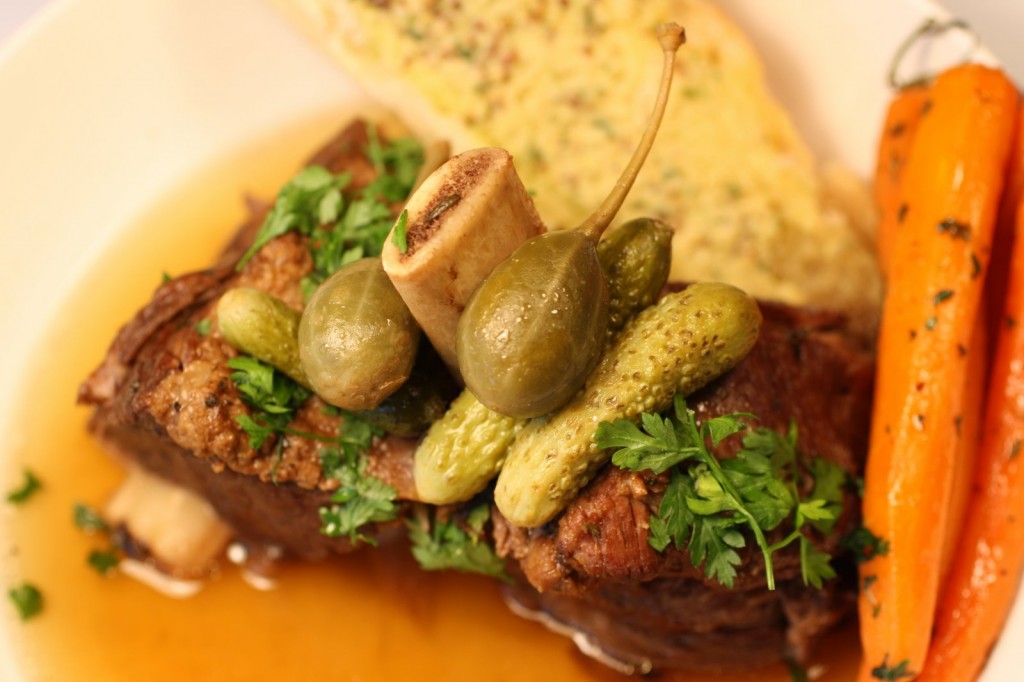 I love this dish. It is a warm bath, and once you dip your toe, you want to dive straight in. Who says you can’t teach an old dog new tricks?
I love this dish. It is a warm bath, and once you dip your toe, you want to dive straight in. Who says you can’t teach an old dog new tricks?
Beef Short Rib Pot au Feu
serves 4
- 2 small leeks, or one large leek (the leeks I find in England are generally large; the leeks I find in America are generally small)
- 2 carrots
- 2 ribs celery
- 1 onion
- 1 whole clove
- 1 tablespoon salt
- 15 grinds cracked black pepper
- ½ tablespoon rosemary, from about 1 stalk, chopped, plus 1 stalk
- ½ tablespoon thyme leaves, from about 6-8 sprigs, chopped, plus 2 sprigs
- 6 beef short ribs, totaling about 3.7 pounds/1.7 kilograms
- 2 tablespoons olive oil
- 4 cups beef stock
- 4 cups water
- 2 bay leaves
When you go to your butcher to buy the short ribs, you’ll want to buy by the weight, rather than “by the rib.” Some ribs are meatier than others, so it may take more to reach the 1.7 kilograms you need. Ideally, you’ll find 6 chunky, meaty segments. You should also know that sometimes short ribs are sold in “segments,” as I call them: whole ribs that have been cut into halves or thirds. If you find them already cut by your butcher, then just ask him for 1.7 kilos worth. If they are longer, ask for that same weight, but then ask your butcher to trim them down into about two-inch pieces. He will expect this, and may even preempt your demand.
First prepare the vegetables. Make sure they are clean. For the onion, leave the bearded root end intact, and quarter the onion so that each quarter has a piece of the root. This will hold the onion together while it cooks and flavors the broth. Peel the onion, and stud with the one clove. For the leek, similarly leave the root intact. Trim off the dark green tops, and slit the white and pale green remains through the root, so that each half, like the onion, will remain intact. Trim the tips off the carrots and the celery. Halve the carrots across, and do the same with the celery.
Prepare the dry rub for the short ribs by combining the salt, pepper, ½ tablespoon rosemary, and ½ tablespoon thyme. Rub this combination all over the short ribs. In a large stock pot, heat the olive oil over medium heat. When the oil begins to ripple, place the meat in a single layer in the oil to sear, 2 minutes per side. Once all six sides have been seared, remove them to a plate, and put the vegetables into the bottom of the pot. If you have more meat than will fit at one time in a single layer in your pot, work in batches.
Arrange the meat back in the pot on top of the vegetables, and cover with the beef stock and the water. Add the remaining rosemary stalk, 2 thyme sprigs, and 2 bay leaves to the broth. Raise the heat to high, and cover, bringing the broth to a boil. Lower the heat, and simmer, covered, for 3 hours on low, until the meat is tender, and falls off the bone.
Arrange the meat and bones in a serving bowl, and pass all the broth through the strainer, separating the broth from the vegetables and stems and bay leaves. Skim the fat off the surface of the broth once it settles. Ladle the broth all around the meat, and garnish with some leftover chervil from the carrots or parsley from the bread, and a few cornichons and caper berries.print this recipe



